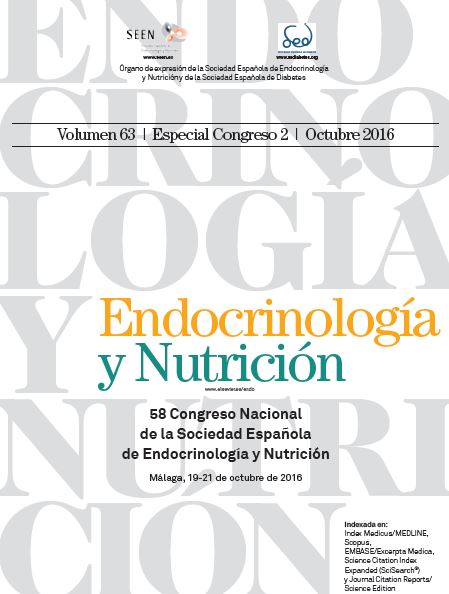82 - CLINICAL UTILITY OF SERUM THYROGLOBULIN MEASURMENT
Serviço de Endocrinologia. Hospital Santa Maria. Lisboa. Portugal.
Introduction: Thyroglobulin, not a major product of follicular cell secretion serves both as a template for thyroid hormone synthesis and as a storage form of those hormones. Thyroglobulin serum levels are increased whenever there is follicular cell hyperactivity and or destruction.
Methods: We measured serum thyroglobulin levels in all patients assisted by one of us at the outpatient endocrine department because of thyroid disease, both at the first appointment and after one year. Results as well as clinical data were entered in a specific database and analysed with the SPSS software.
Results: Serum thyroglobulin (RV 4-77 ng/dL) presented a bimodal distribution and values were increased at the first appointment - 220 ± 944 (294) - and decreased after one year - 77 ± 350 (280), p < 0,05. Mean values were increased in all diagnostic groups, with significantly higher values in Graves’ disease - 352 ± 631 ng/mL and thyroid neoplasia – 1,449 ± 3,714 ng/mL. 85% of the patients with differentiated thyroid neoplasia presented very high levels of thyroglobulin, while 40% of those patients with otherwise explained very high levels of thyroglobulin were found to have thyroid neoplasia.
Conclusions: A marker of follicular cell stress/destruction serum thyroglobulin measurements may well have a wider clinical utility. This is suggested by the clear bimodal distribution, the increased values in all diagnostic groups, and the significant reduction after treatment. It may be useful to the differential diagnosis of hyperthyroidism in patients treated with levothyroxine, in Hashimoto’s thyroiditis – atrophic and goitrous forms – and it remains an unexpensive complementary marker for differentiated thyroid neoplasia.





